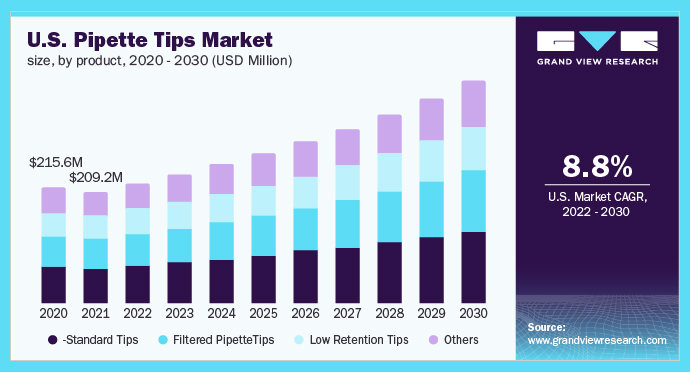As the midyear mark approached, the robust pulse of the U.S. economy remained resolute, defying concerns of an impending recession. The release of the June job report from the Labor Department on Friday painted a positive picture, showcasing resilient job growth and a steady unemployment rate, effectively allaying fears of a sharp economic downturn, at least for the time being.
The report revealed an impressive addition of 372,000 jobs, surpassing economists’ projections by nearly 100,000. The unemployment rate, holding steady at 3.6 percent, remained close to a 50-year low. The positive numbers provided a much-needed reprieve for a market that had been reeling from a series of lackluster economic indicators, serving as a beacon of hope amidst the gloomy clouds of economic uncertainty.
This positive momentum in job growth, coupled with unexpected wage gains, could potentially grant the Federal Reserve more room for maneuvering in its efforts to curb inflation. However, concerns linger regarding the potential consequences of the Fed’s policy of increasing interest rates, raising apprehensions about the possibility of a recession that could inflict significant hardship.
Despite the overall positive outlook, the rate of employment growth has shown a gradual decline. While the average employment gain over the last three months remained at a steady 375,000, it marked a decrease from the monthly pace of 539,000 in the first quarter of the year. Nevertheless, employers have displayed a remarkable inclination to retain their workforce, with initial unemployment claims seeing only a marginal increase from their nadir in March.
The private sector’s resurgence to its pre-pandemic employment levels, underscored by the White House, signifies a commendable achievement. However, this milestone still falls short of what would have been expected in the absence of the pandemic’s disruptive impact. Except for the public sector, virtually no broad industry experienced job losses in June, further consolidating the narrative of a resilient job market.
Christian Lundblad, a professor of finance at the Kenan-Flagler Business School at the University of North Carolina, emphasized the significance of this recovery, stating, “We’ve essentially ground our way back to where we were pre-Covid. So, this does not necessarily look like a dire situation, despite the fact that we’re grappling with inflation and economic declines in some other dimensions.”
The robust demand for workers was notably evident in the 11.3 million job openings reported in May, a figure that remains close to record highs, effectively leaving almost two job opportunities available for every individual seeking employment. This dynamic suggests that individuals displaced by sectors facing pressure are more likely to secure new jobs swiftly.
Moreover, the Labor Department’s comprehensive measure of labor force underutilization, which accounts for part-time workers seeking full-time employment and those discouraged from job hunting, fell to its lowest rate since 1994. This significant decline indicates that businesses are optimizing their existing workforce as hiring continues to pose challenges.
Job gains in service-providing industries spearheaded the positive trajectory in June, aligning with the gradual shift in consumer spending from goods to experiences that were previously curtailed due to public health restrictions. The leisure and hospitality sector, although still recuperating to pre-pandemic employment levels, saw an encouraging addition of 67,000 jobs.
However, the government sector witnessed a departure from this upward trend, experiencing a decline of 9,000 jobs. Notably, this sector stood 664,000 positions below its February 2020 level, signaling the enduring challenges faced by the public sector in the wake of the pandemic.
The recent job market resilience has also played a pivotal role in uplifting historically marginalized groups, as evidenced by the drop in the unemployment rate for Black Americans to 5.8 percent, though it remains nearly double that of their white counterparts. This rate represents the lowest level since November 2019, marking a noteworthy stride toward greater inclusivity in employment.
Despite the encouraging employment landscape, surveys reflecting dwindling consumer and business sentiment have painted a contrasting picture. These sentiments have plummeted to concerning lows in recent months, suggesting a dissonance between the perceived economic state and the underlying robust job growth. While the widespread perception of an impending recession seems unfounded, it is improbable that the rapid employment growth witnessed in the first half of the year will seamlessly transition into the second half.
Skyrocketing prices have exerted significant pressure on consumer spending, resulting in diminishing savings. The labor force’s constraints, compounded by aging demographics, low levels of immigration, and barriers to work such as childcare and eldercare availability, have kept many individuals on the sidelines.
In a disconcerting development, the proportion of individuals in the prime of their careers, aged 25 to 54, either employed or actively seeking work, dipped to 82.3 percent in June from 82.6 percent, significantly below the pre-pandemic high of 83.1 percent.
The report highlighted the lingering impact of Covid-19, with 2.1 million individuals indicating their inability to work in June due to pandemic-induced closures or loss of business, compared to 1.8 million in the previous month. Additionally, the persistence of high inflation rates may have prompted some individuals to withdraw from the job market, unable to sustain their employment due to the soaring cost of living.
One such individual affected by these economic challenges is Megan Petersen, a resident of Spokane, Washington, who supports her family of four through her full-time job in digital marketing and a side business selling jewelry. Her husband, previously employed by the U.S. Postal Service, made the difficult decision to resign recently as the escalating costs of gasoline and childcare surpassed his take-home pay.
“After deductions and everything come out of your paycheck, it’s literally less than those two things combined,” expressed Petersen, highlighting the financial strain faced by her family.
Although her husband may return to work when their young daughter enters school, the uncertainty of a robust job market awaiting him looms large. Consulting firm Oxford Economics anticipates the economy to add an average of only 65,000 jobs per month in 2023, signaling a potential deceleration in employment growth.
Business leaders have reported a gradual slowdown in new orders, even as some supply chain challenges have eased. Employers are increasingly turning to automation, opting to automate tasks rather than hiring new personnel as economic uncertainties loom.
Bill Adams, the chief economist at Comerica Bank, noted, “Employers are becoming less eager to fill those job postings as they monitor the slowing economy. I would expect that businesses will gradually delay filling open positions before they actually withdraw job postings.”
Although wage growth remained robust in June, it moderated compared to previous months, failing to keep pace with the soaring cost of living, thereby exerting financial pressure on individuals with lower incomes.
Heading into the fall, anticipations of slowdowns are anticipated, particularly in businesses sensitive to interest rates, such as construction and manufacturing. Andrew Wernick, the owner of Industrial Plywood, a lumber supplier in Reading, Pennsylvania, experienced a significant rise in wages to compete for workers in the last year as demand for door frames and cabinets soared. However, the recent surge in mortgage rates leading to a decline in home sales has left him uncertain about retaining these newly hired employees through the end of the year.
“Our clients are still working off backlogs, and no new work is coming in the front door,” Wernick expressed, voicing the challenges faced by his business.
Several industries that vigorously expanded their workforce to meet the heightened demand during the early stages of the pandemic are now witnessing a shift back to more traditional consumption patterns. For workers enticed by higher wages offered by businesses during the labor shortage, this shift poses a unique set of challenges.
The trucking industry, for instance, witnessed a surge in the recruitment of thousands of drivers as freight rates soared and headlines touted a labor shortage. However, as spending on goods diminished, it resulted in insufficient cargo to sustain the workforce on the road.
Kenny Vieth, the president of the transportation data company ACT Research, indicated, “Guys were just pouring into the market at the exact moment when freight volumes rolled off. Given how quickly the spot market has collapsed, we’re projecting that the driver capacity reset will occur more rapidly.”
The economic landscape has repeatedly demonstrated its vulnerability to unforeseen challenges, with unpredictable external forces often exerting significant headwinds. The emergence of a new coronavirus variant, geopolitical tensions, or natural disasters disrupting supply chains remains a persistent concern.
However, the variable that continues to dominate the minds of most forecasters is the impact of the Federal Reserve’s interest-rate policy on economic activity. Cailin Birch, the lead U.S. analyst for the Economist Intelligence Unit, expressed, “I think it’s inevitable that we’ll see a slowdown. The question is whether it is a slowdown that’s manageable, or if it escalates into a collapse.”
As the nation grapples with the intricate dynamics of the ever-evolving economic landscape, the resilience of the job market provides a glimmer of hope, tempered by the challenges posed by inflation, supply chain disruptions, and the implications of the Federal Reserve’s policy decisions. The second half of the year stands as a litmus test, casting a spotlight on the intricacies of economic recovery and resilience amid a shifting and uncertain global landscape.




